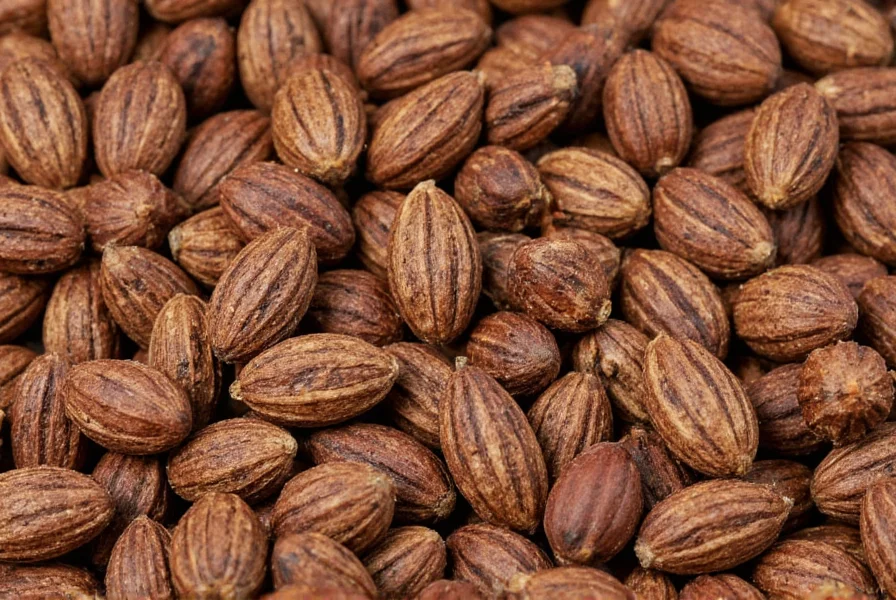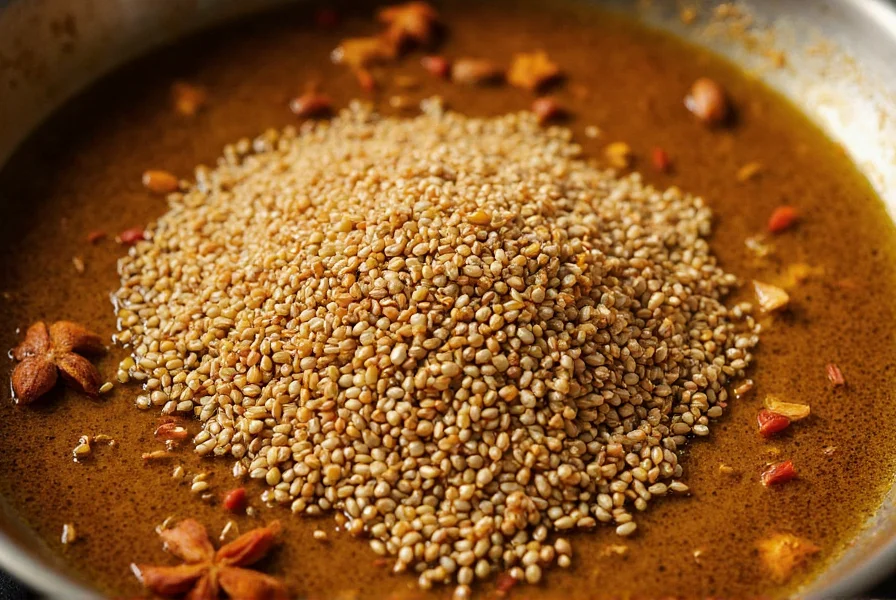Understanding what makes cumin "nalla" or good is crucial for authentic Telugu cooking. Cumin, known as jeelakarra in Telugu, serves as a foundational spice in Andhra and Telangana culinary traditions. The quality directly impacts the flavor profile of dishes like pulihora, pesarattu, and various vegetable preparations. High-quality cumin seeds contain higher concentrations of essential oils that release distinctive earthy, warm notes when tempered in hot oil—a technique called podalu in Telugu cooking.
What Defines Quality Cumin Seeds
True nalla jeelakarra exhibits specific physical and sensory characteristics that distinguish it from inferior varieties. The best cumin comes from regions like Anantapur and Kurnool in Andhra Pradesh, where soil conditions produce seeds with optimal oil content. When evaluating cumin quality, experienced Telugu cooks assess multiple factors including appearance, aroma, and behavior during the tempering process.
| Quality Indicator | Nalla Jeelakarra Characteristics | Lower Quality Indicators |
|---|---|---|
| Color | Uniform light to medium brown with slight golden hue | Inconsistent coloring, dark spots, or overly pale appearance |
| Aroma | Strong, warm, earthy scent with citrus notes when crushed | Weak aroma or musty smell indicating age or poor storage |
| Texture | Dry, brittle seeds that break easily when pressed | Oily texture or seeds that stick together |
| Tempering Behavior | Cracks open quickly in hot oil, releasing aroma within 10-15 seconds | Takes longer to pop or burns easily |
How to Select Authentic Nalla Jeelakarra
When shopping for quality cumin in local markets or stores, follow these practical selection techniques used by Telugu home cooks. First, examine the seeds under good lighting—premium jeelakarra should have a consistent size with minimal broken pieces. The ideal length ranges between 3-5mm with a single longitudinal groove running down the center. Avoid seeds with visible dust or powder at the bottom of the container, which indicates age and loss of essential oils.
Perform the crush test by placing a few seeds between your fingers and applying gentle pressure. Authentic nalla jeelakarra releases a distinctive warm, slightly peppery aroma with citrus undertones. If you detect no scent or a stale smell, the cumin has likely lost its potency. For packaged cumin, check the harvest date rather than just the expiration date—cumin maintains optimal flavor for 6-12 months after harvest when stored properly.

Proper Storage Techniques for Long-Lasting Flavor
Maintaining the quality of nalla jeelakarra requires appropriate storage methods that preserve its essential oils. Traditional Telugu households use airtight clay pots or glass containers kept in cool, dark pantries. Modern storage solutions include opaque containers with tight-sealing lids stored away from heat sources. Never keep cumin near the stove or in clear containers exposed to light, as both accelerate flavor degradation.
For extended storage beyond six months, consider freezing cumin in an airtight container. This method preserves the volatile oils that give jeelakarra its distinctive flavor. When retrieving frozen cumin, allow the container to reach room temperature before opening to prevent condensation. Properly stored high-quality cumin maintains its potency for up to two years, while poorly stored cumin loses significant flavor within three months.
Culinary Applications in Telugu Cuisine
The unique flavor profile of nalla jeelakarra makes it indispensable in traditional Telugu dishes. In Andhra cooking, cumin serves as the base for talimpu (tempering) in lentil preparations like pappu charu. The seeds' essential oils activate when heated in oil, creating complex flavor compounds that form the foundation of many regional dishes. For authentic Gongura pachadi or tomato pappu, the quality of jeelakarra directly impacts the final taste.
Telugu cooks employ specific techniques to maximize cumin's flavor potential. The traditional method involves heating oil until shimmering, adding cumin seeds, and waiting for them to crackle and change color slightly before adding other spices. This precise timing—usually 10-15 seconds—ensures optimal flavor release without burning. In some coastal Andhra recipes, cumin combines with mustard seeds and curry leaves to create the distinctive flavor base for seafood preparations.

Health Benefits of Premium Quality Cumin
Beyond its culinary importance, nalla jeelakarra offers significant health benefits that have been recognized in traditional Telugu home remedies. High-quality cumin contains higher concentrations of thymol, cuminaldehyde, and other bioactive compounds that aid digestion and boost immunity. When properly stored and used fresh, these compounds remain at optimal levels, providing maximum health benefits.
Traditional Telugu households use cumin in various wellness practices, including mixing roasted jeelakarra powder with jaggery for digestive issues or adding it to buttermilk during summer months to prevent heat-related ailments. Scientific research supports many of these traditional uses, confirming cumin's anti-inflammatory properties and ability to enhance nutrient absorption, particularly for iron and other minerals.
Avoiding Common Cumin Selection Mistakes
Many home cooks make critical errors when selecting and using cumin that compromise dish quality. One common mistake involves purchasing pre-ground cumin powder, which loses its volatile oils rapidly. Whole seeds maintain freshness significantly longer and should be ground fresh as needed. Another error is using cumin that has been stored near strong-smelling spices like asafoetida, which can transfer unwanted flavors.
Some shoppers confuse cumin with caraway seeds, which have a different flavor profile unsuitable for authentic Telugu cooking. True jeelakarra has a straighter shape with a single groove, while caraway curves more dramatically with two ridges. Additionally, avoid cumin that appears unnaturally shiny, as this often indicates chemical treatment to enhance appearance. Authentic nalla jeelakarra has a matte finish that becomes slightly glossy only when properly tempered in oil.
FAQ
How can I test cumin quality at home before cooking?
Place a few cumin seeds in a dry skillet over medium heat. Quality nalla jeelakarra should release a strong, warm aroma within 30 seconds and change from brown to a slightly darker shade without burning. If the seeds take longer than a minute to scent the air or burn immediately, they're likely old or low quality.
What's the difference between Telugu cumin and regular cumin?
Telugu cooking traditionally uses Indian cumin (Cuminum cyminum) varieties grown in Andhra Pradesh and Telangana regions. These varieties have a more intense, earthier flavor with subtle citrus notes compared to some international varieties. The specific soil conditions in these regions produce cumin with higher essential oil content, making it particularly suitable for the bold flavors of Telugu cuisine.
Can I substitute cumin powder for whole seeds in Telugu recipes?
While convenient, cumin powder doesn't provide the same flavor depth as freshly tempered whole seeds in traditional Telugu cooking. If substituting, use half the amount of powder compared to whole seeds, and add it later in the cooking process. For authentic results in dishes like pulihora or pappu, whole nalla jeelakarra is essential for proper tempering technique.
How does cumin quality affect the tempering process in Telugu cooking?
High-quality nalla jeelakarra cracks open quickly in hot oil (10-15 seconds), releasing its essential oils that form the flavor foundation of many Telugu dishes. Lower quality cumin takes longer to pop, burns easily, or fails to release sufficient aroma, resulting in dishes that lack the characteristic depth and complexity of authentic Andhra and Telangana cuisine.
Why does cumin sometimes taste bitter in my Telugu dishes?
Bitter cumin usually indicates either poor quality seeds or improper tempering. Old or improperly stored jeelakarra develops bitter compounds. Additionally, heating cumin in oil that's too hot causes burning. For authentic Telugu flavor, heat oil until a drop of water sizzles but doesn't violently splatter, then add cumin and wait for the characteristic crackling sound before proceeding.










 浙公网安备
33010002000092号
浙公网安备
33010002000092号 浙B2-20120091-4
浙B2-20120091-4